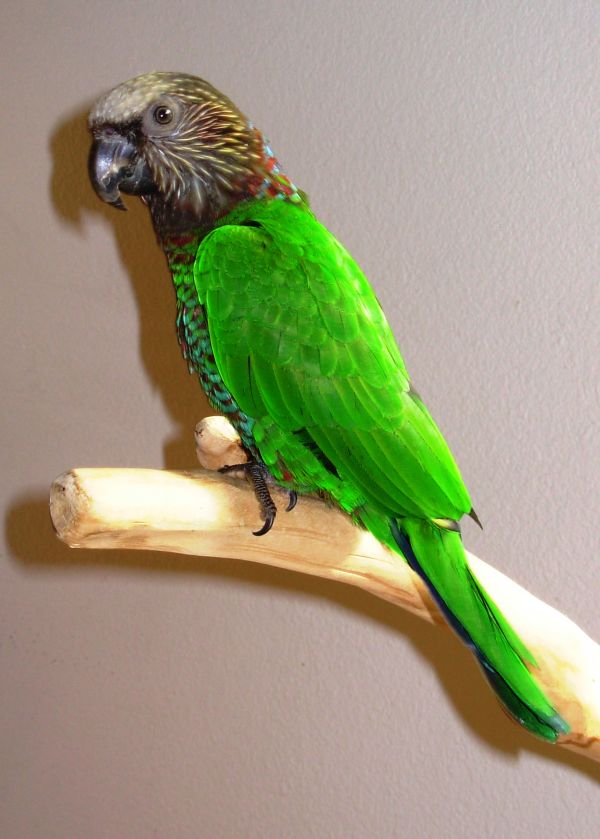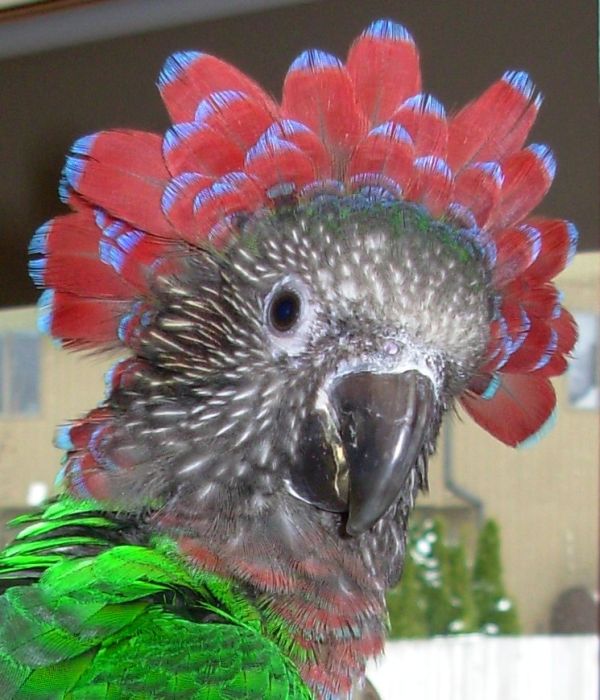|
The Society:
 HOME
HOME
 Introduction
Introduction
 Objects
Objects
 Join or renew
Join or renew
 Guest Book
Guest Book
 Hall of Fame Hall of Fame
 Products For Sale
Products For Sale
 Classifieds Ads
Classifieds Ads
 Contact Us
Contact Us
The Avicultural Journal
 Journal Archives
Journal Archives
 Exotic Bird Species
Exotic Bird Species
 Budgerigar Information
Budgerigar Information
 Canary Information
Canary Information
 Parrot Information
Parrot Information
 Finch Information
Finch Information
 General Information
General Information
 First Breeding Awards
First Breeding Awards
Affiliations:
 Affiliated Clubs
Affiliated Clubs
 Parrot Association of Canada
Parrot Association of Canada
 Avian Preservation Foundatn
Avian Preservation Foundatn
Showing Birds:
 Canadian Shows
Canadian Shows
 National Results
National Results
 Accredited Judges
Accredited Judges
Leg Bands:
 General Information
General Information
 Band Size Chart
Band Size Chart
 Trace a Band
Trace a Band
 Band Prices
Band Prices
 Order Bands
Order Bands
 Current Ring Codes
Current Ring Codes
Links:
 Links
Links
 Copyright & Privacy Policies
Copyright & Privacy Policies
|
The Hawkhead Parrot
BY Denise Lacazette

 The Hawkhead Parrot is originally from the tropical rainforests of the Amazon. It is a mid-size parrot with a unique ruff of feathers and interesting coloring. The head resembles the head of a hawk (hence the name) in coloring with its beige and brown streaks. The ruff which rises up around the neck makes me wonder if they are going to say “Off with their Heads!” or “How many scalps did you get today?” The ruff is beautifully colored deep red with blue tips. Their abdomens match the ruff. The rest of the bird is covered in beautiful green feathers ending in brownish black at the primaries.
Many exotic birds are given mixed reviews when it comes to their suitability as a pet. The Hawkhead parrot is no exception. Mid and large size parrots are generally not suited to sit in a cage all day and just ‘look pretty’. They require a great deal of interaction and stimulation to keep from getting bored. The Hawkhead parrot, in particular, will greatly benefit from socialization with many people (especially family members). They should also have more interaction time than the minimum one hour per day recommended for most birds. They need to be busy and the more “busy” they are with you the happier they will be. Left to their own devices they become territorial (even with family) and destructive. Toys and chewing objects (safe tree branches or wood toys) are a must for this busy bird. Hawkhead parrots tend to be a bit noisier than some other parrots. Sounds range from little soft murmurs to raucous calls. Many Hawkhead parrots mimic sounds and a few learn to speak a couple of words.
Their diet in the wild is composed mainly of large, fresh fruits. In general their diet should contain lots of fresh fruits, some vegetables, seeds, and leafy greens. Given the high content of fruit in their diet, a pellet formula may not provide a fully balanced diet. Check with your avian veterinarian for specific recommendations.
The Hawkhead parrot can be a delightful companion for the right human. Its unique ruff is sure to inspire awe with its beauty. If I had a few more hours every day to devote to another bird, this is the one I would have on my wish list. If you are considering a Hawkhead parrot as your companion, please do your homework. These delightful birds are not for everyone. Work with an aviculturist or breeder to ensure this is the right companion for you and your family BEFORE you bring one home.
Hawkhead parrots are affectionate birds that exhibit clown-like behavior. They are smart, willing to train and can learn tricks or to talk. They are relatively small for parrots, weighing in at only an average of 8.11 ounces. Their colors are a handsome blend of buff-white, brown streaked with white, dark red, blue and green. Although these birds have a reputation for being aggressive or loud, a tame, well-behaved bird can be an affectionate delight. Follow these steps to care for a Hawkhead parrot.
Have the proper housing. Due to the activity level of these birds, they will benefit from a large cage. Check with your local pet store to determine what size cage to purchase. It is recommended to buy the largest cage you can afford and contain in your home. There should be several perches of different heights, hanging toys, a fresh water container and a food tray.
2Provide the right kind of nutrition. Diet is usually the reason that these birds do not thrive. It is very important to feed them the same type of food until they become adjusted to their new home. If the bird is doing well, it is okay to experiment with different food items. Their diet should contain lots of fresh fruits, some vegetables, nuts, seeds and leafy greens. Given their need for such high content of fruit, a pellet formula may not be enough to maintain a healthy diet. Check with your local pet shop or veterinarian for specific recommendations.
3Teach the Hawkhead parrot to behave. It is very important not to spoil the bird and encourage negative behavior as this will lead to a poorly behaved pet. Much like a dog has to be trained to behave in a manner that is appropriate for your situation, a Hawkhead parrot needs to be trained. Reward good behavior with a favorite snack or attention and ignore bad behavior. Otherwise, bad behavior could sour your relationship with this pet. Avoid playing rough with a Hawkhead, as this can lead to aggressive behavior in the future. Treat the bird with gentleness and you will have a well-behaved, well-adjusted bird.
Many exotic birds are not recommended as first-time pets. The Hawkhead parrot is a high maintenance pet and it is best to consult a local owner regarding whether this is the right pet for you.
The Hawkhead parrot is happiest when it has plenty of interaction to keep them busy. If they are left alone for long periods of time, they can become territorial and destructive.
The Hawkhead Parrot is originally from the tropical rainforests of the Amazon. It is a mid-size parrot with a unique ruff of feathers and interesting coloring. The head resembles the head of a hawk (hence the name) in coloring with its beige and brown streaks. The ruff which rises up around the neck makes me wonder if they are going to say “Off with their Heads!” or “How many scalps did you get today?” The ruff is beautifully colored deep red with blue tips. Their abdomens match the ruff. The rest of the bird is covered in beautiful green feathers ending in brownish black at the primaries.
Many exotic birds are given mixed reviews when it comes to their suitability as a pet. The Hawkhead parrot is no exception. Mid and large size parrots are generally not suited to sit in a cage all day and just ‘look pretty’. They require a great deal of interaction and stimulation to keep from getting bored. The Hawkhead parrot, in particular, will greatly benefit from socialization with many people (especially family members). They should also have more interaction time than the minimum one hour per day recommended for most birds. They need to be busy and the more “busy” they are with you the happier they will be. Left to their own devices they become territorial (even with family) and destructive. Toys and chewing objects (safe tree branches or wood toys) are a must for this busy bird. Hawkhead parrots tend to be a bit noisier than some other parrots. Sounds range from little soft murmurs to raucous calls. Many Hawkhead parrots mimic sounds and a few learn to speak a couple of words.
Their diet in the wild is composed mainly of large, fresh fruits. In general their diet should contain lots of fresh fruits, some vegetables, seeds, and leafy greens. Given the high content of fruit in their diet, a pellet formula may not provide a fully balanced diet. Check with your avian veterinarian for specific recommendations.
The Hawkhead parrot can be a delightful companion for the right human. Its unique ruff is sure to inspire awe with its beauty. If I had a few more hours every day to devote to another bird, this is the one I would have on my wish list. If you are considering a Hawkhead parrot as your companion, please do your homework. These delightful birds are not for everyone. Work with an aviculturist or breeder to ensure this is the right companion for you and your family BEFORE you bring one home.
Hawkhead parrots are affectionate birds that exhibit clown-like behavior. They are smart, willing to train and can learn tricks or to talk. They are relatively small for parrots, weighing in at only an average of 8.11 ounces. Their colors are a handsome blend of buff-white, brown streaked with white, dark red, blue and green. Although these birds have a reputation for being aggressive or loud, a tame, well-behaved bird can be an affectionate delight. Follow these steps to care for a Hawkhead parrot.
Have the proper housing. Due to the activity level of these birds, they will benefit from a large cage. Check with your local pet store to determine what size cage to purchase. It is recommended to buy the largest cage you can afford and contain in your home. There should be several perches of different heights, hanging toys, a fresh water container and a food tray.
2Provide the right kind of nutrition. Diet is usually the reason that these birds do not thrive. It is very important to feed them the same type of food until they become adjusted to their new home. If the bird is doing well, it is okay to experiment with different food items. Their diet should contain lots of fresh fruits, some vegetables, nuts, seeds and leafy greens. Given their need for such high content of fruit, a pellet formula may not be enough to maintain a healthy diet. Check with your local pet shop or veterinarian for specific recommendations.
3Teach the Hawkhead parrot to behave. It is very important not to spoil the bird and encourage negative behavior as this will lead to a poorly behaved pet. Much like a dog has to be trained to behave in a manner that is appropriate for your situation, a Hawkhead parrot needs to be trained. Reward good behavior with a favorite snack or attention and ignore bad behavior. Otherwise, bad behavior could sour your relationship with this pet. Avoid playing rough with a Hawkhead, as this can lead to aggressive behavior in the future. Treat the bird with gentleness and you will have a well-behaved, well-adjusted bird.
Many exotic birds are not recommended as first-time pets. The Hawkhead parrot is a high maintenance pet and it is best to consult a local owner regarding whether this is the right pet for you.
The Hawkhead parrot is happiest when it has plenty of interaction to keep them busy. If they are left alone for long periods of time, they can become territorial and destructive.
|